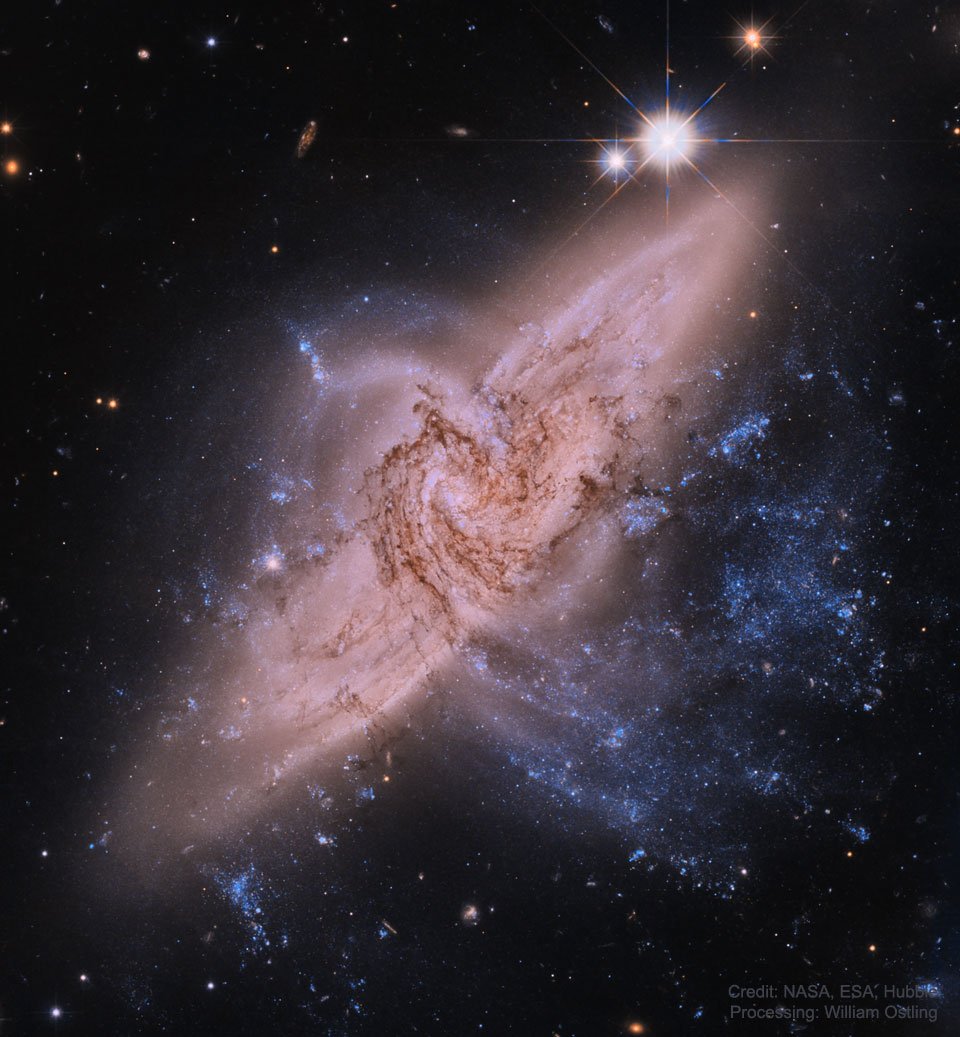NGC 3314:当星系重叠
(原标题: NGC 3314: When Galaxies Overlap)
2021-11-17
浏览次数: 162
为什么附近的星系不会对背景星系产生引力透镜效应?确实如此,但由于两个星系都离得很近,所以角位移比星系本身的角尺寸小得多。哈勃望远镜拍摄的NGC 3314的特色图像显示,两个大型螺旋星系恰好排成一条直线。前景的螺旋星系NGC 3314a几乎是正面的,它的风车形状是由年轻明亮的星团定义的。然而,在背景星系NGC 3314b的辉光下,也可以看到星际尘埃的黑暗漩涡带,追踪着更近的螺旋结构。这两个星系都位于九头蛇星系团的边缘,这个星系团距离我们大约2亿光年。引力透镜的畸变在透镜星系较小和较远的地方更容易被观测到。然后,背景星系甚至可能被扭曲成一个环,围绕着更近的星系。由于前景星系中的恒星瞬间放大了背景星系中恒星发出的光,在未来的高分辨率望远镜观测活动中,可能有一天会看到快速的引力透镜闪光。
查看原文解释
Why doesn't the nearby galaxy create a gravitational lensing effect on the background galaxy? It does, but since both galaxies are so nearby, the angular shift is much smaller than the angular sizes of the galaxies themselves. The featured Hubble image of NGC 3314 shows two large spiral galaxies which happen to line up exactly. The foreground spiral NGC 3314a appears nearly face-on with its pinwheel shape defined by young bright star clusters. Against the glow of the background galaxy NGC 3314b, though, dark swirling lanes of interstellar dust can also be seen tracing the nearer spiral's structure. Both galaxies appear on the edge of the Hydra Cluster of Galaxies, a cluster that is about 200 million light years away. Gravitational lens distortions are much easier to see when the lensing galaxy is smaller and further away. Then, the background galaxy may even be distorted into a ring around the nearer. Fast gravitational lens flashes due to stars in the foreground galaxy momentarily magnifying the light from stars in the background galaxy might one day be visible in future observing campaigns with high-resolution telescopes.
